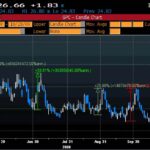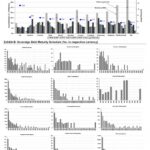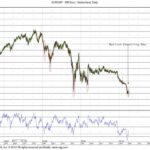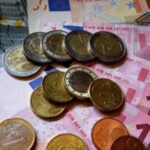Dicembre 30, 2009 EcoAnemia
Le mie previsioni per il primo semestre 2010
[…]La crisi economica ha fatto calare del 2% il consumo di energia elettrica in Svizzera nel corso dell’anno idrologico 2008/09.
Stando alle previsioni, dopo il record registrato nel 2008, nel 2009 si dovrebbe assistere ad una diminuzione dell’uso di corrente.[…][…]Il calo registrato in Svizzera corrisponde alle evoluzioni riscontrate negli altri paesi europei.
Per la prima volta dalla Seconda Guerra mondiale, gli esperti del settore ritengono che nel 2009 il consumo globale di energia elettrica stagnerà[…]
Fonte : CdT
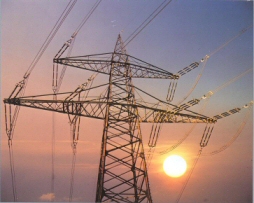
[…]Spanish savings banks have begun selling off the large property portfolios they acquired as collateral from loan defaults, in an effort to improve solvency ratios, a move that risks further falls in property values that could impair the value of their asset books.
In Spain, the global financial crisis that erupted in 2007 ended a real-estate and construction-based asset boom, plunging the country into a recession that has yet to end, even as many other European economies have returned to growth.
As the unemployment rate has soared to more than 19%, residential-property buyers have defaulted on loans in massive numbers, as have property developers, overleveraged in a moribund market.
As lenders have assumed the collateral on defaulted loans, local financial institutions—particularly unlisted savings banks—have collected properties valued at about €8.5 billion ($12.2 billion) over the past 12 months.

So far the banks have held on to the vast majority of these properties, hoping an eventual economic recovery will allow the disposal of these assets at acceptable prices—a strategy they successfully adopted during a recession in the early 1990s.
Accumulating properties also stopped a sharp drop in prices, avoiding the painful write-downs banks are required to book when the value of their assets falls.Until now the strategy has worked. Spanish property prices have been unusually resilient.
Average prices have dropped by a modest 9% over the past 12 months.In the last five years of the housing bubble, average prices jumped 71%, according to Housing Ministry data.
But now banks are facing new demands for liquidity that will force them to sell more property. They are drawing up sales strategies, creating real-estate management divisions and offering discounts in an effort to lure buyers.[…]
[…]The research department of Spanish bank BBVA estimated in June that Spanish housing prices would fall by 10% in 2009 and by 12% in 2010. It envisioned a total 30% peak-to-trough drop. A new review in December didn’t change that forecast.

According to the Bank of Spain, 70% of a total of €30 billion in real-estate assets owned by financial institutions is now in the hands of savings banks, many of which are comparatively small and regionally focused.Were BBVA’s estimate of the fall in house prices to prove accurate, the value of the €30 billion of real-estate assets held by banks could fall some €6.6 billion in the next two years.[…]
Fonte : WSJ
Ma se il consumo di elettricità diminuisce per la prima volta dalla seconda guerra mondiale, ed il mercato immobiliare è visto in declino, come è possibile una duratura ripresa nel 2010 ?
E quindi, i listini – nella migliore delle ipotesi – sono destinati ad un lungo periodo di lateralità, anche perchè le grosse istituzioni devono fare cassa, e quindi continueranno nel loro processo di develerage dei loro asset.
Ed ecco perchè alla richiesta di un mio parere sull’andamento dei listini e dei diversi asset nel corso del primo semestre 2010 ho risposto nel seguente modo :
Ftsemib (listini azionari) : Flat/down
Long Bond : down
Corporate bonds : up
Junk bond: down
Gold : up
Oil : flat/up
Dollar : up
Euro: down
Home Prices : down
China : flat/down
Per la cronaca, la mia visione sui Bonds corrisponde all’ultima di Pimco , consultabile al seguente link : US Credit Kiesel Picking Winners January

Mentre la mia visione sui mercati azionari per il primo semestre 2010 , più o meno è questa (anche se non concordo sulla profondità della correzione, il 20%-25% nel primo semestre mi pare esagerato, tranne nel caso di un veloce deterioramento della situazione globale od un qualche evento socio/politico inaspettato :
[…]Speaking of the past decade and looking into 2010, here’s a quick view from a “short-term bear” in a Squawk on the Street interview yesterday morning with John Reutemann, founder and CIO of Financial Strategies, on his 2010 market strategy :
How’s 2010 look to you?
I’m pretty much a short-term bear.
There’s a lot of truth out there that isn’t being told:
The real unemployment rate is U6 17.2%.
There’s 3.5 million unsold homes.
According to the NBAA, there’s another 4.5 million of unsold homes that are going to be following that.
Unemployed people aren’t shopping at Home Depot for granite and wallpaper.
So are we expecting a correction?
IMPO, we are absolutely at the top of another stock market bubble.
I would not be at all surprised to see a pullback to 850 to 900 on the S&P in the next 3 to 5 months.
Given zero percent interest rates, how can stocks fall back?
Very simple.
This has not been a rally that’s been led by the consumer.
If you look at the rally off the bottom from March 9th, it’s very artificial.
If Citibank can borrow money at 0 and Ford can borrow money at 0, I don’t see the consumer driving that. Everybody’s talking about Ford being the darling of the recovery.
Ford last week announced plans to give buyouts to another 40,000 people. And the rally that you’ve seen since March has not been led by the consumer, and it’s not been led by the small businessman.
I’ll grant you that most recoveries in this country are driven or led by the consumer, however, not all of them. Sometimes you have slow downs that are led because of capital spending slowdown and, therefore, you can have recoveries that are primarily capital spending recoveries and there’s nothing wrong with that.
There’s absolutely nothing wrong with that. I agree totally.
There’s only one problem.

Roughly 80% of employment is small business as defined by employees of fewer than 50 and your small business credit markets are frozen.
Small businessmen are afraid to hire new employees and small businessmen are petrified of what the new health care bill is going to do to their budgets and their bottom line. So we have an economy that’s not being led by the consumer and an economy that’s not being led by the small businessman.
So for those who are in the bear camp, for those that basically adhere to your view, what would you be doing to protect your money?
I went 100% cash back on October 23 when the S&P was at about 1093.
So I’m sure I’ve left a couple of points on the table.
But I would rather protect my client’s principal than risk it and the message of the last 10 years is do not risk principal. The buy and hold methodology has not served the public.
The 10-year return on the S&P 500 is four trading days away from closing at negative 10 for the decade.
And people need to be cautious and if you’ve participated in the rally for the last nine months you need to be employing some risk management tools; you need to be looking at stop losses and you need to be asking yourself how much of the rally are you willing to give back considering the fact that you’re probably already negative 10 for the last 10 years. And that’s nothing to brag about…
So what do you think is appreciable over the next 10 years? Do you think it will be commodities?
Commodities by the way have been the number one performing major asset class for the last 10 years, and contrary to that, the U.S. stock market has been the worst.
For the last 10 years we’ve had a commodities index that’s up 111% and we have the U.S. stock market at negative 10.
The public needs to hear this.




